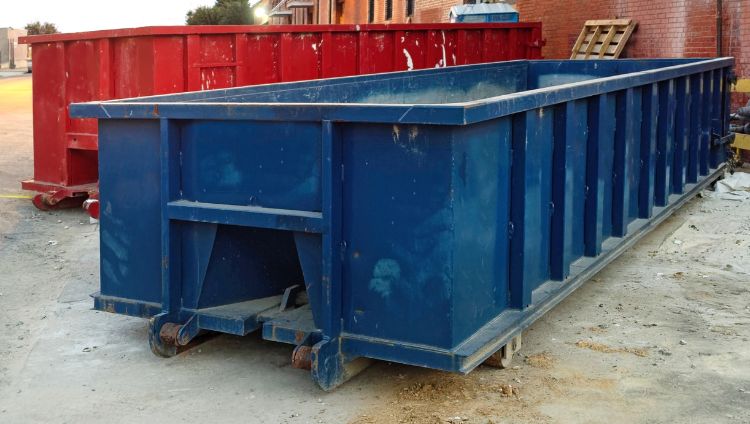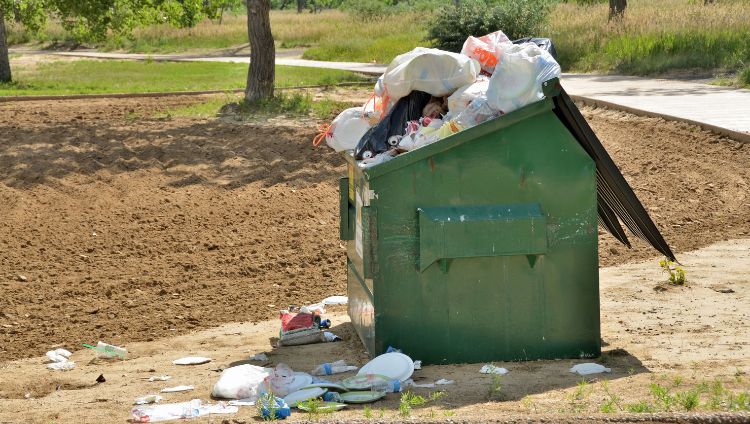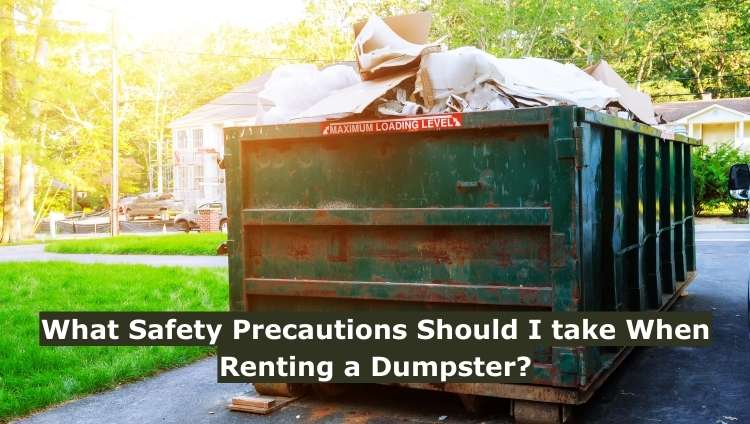Renting a dumpster is a practical solution for managing waste during home renovations, cleanouts, and large projects. However, it’s essential to prioritize safety to avoid potential hazards.
By taking the right precautions, you can ensure a smooth and hazard-free experience. This guide outlines the key to safety precautions when renting a dumpster measures to follow when renting a dumpster, covering everything from choosing the right size to securing the area and ensuring proper transportation.
Prioritizing these safety precautions when renting a dumpster helps protect everyone involved and ensures an efficient workflow.
Choosing the Right Dumpster Size
When renting a dumpster, selecting the appropriate size is crucial for safety. Estimating the amount of waste you need to dispose of accurately can prevent overloading a smaller dumpster, which can be hazardous.
Overfilled dumpsters can cause debris to spill out, posing risks to both people and property. If you’re unsure about the right size, consult with the rental company for guidance based on your specific project needs.
For more tips on choosing the right size, check out this guide on selecting the best dumpster size for your project.

Proper Placement
To prevent tipping or shifting, it’s crucial to place the dumpster on solid ground. Ensure it is positioned on a flat, stable surface with sufficient clearance around it for safe access and movement.
Avoid placing the dumpster beneath power lines or near utility installations to prevent accidents during loading and unloading.
Also, consider the effect on landscaping; placing the dumpster on a paved or gravel surface can help prevent damage to lawns or gardens.
Loading the Dumpster Safely
When loading the dumpster, distribute the weight of the debris evenly to maintain balance and stability. Avoid allowing debris to overhang the sides, as this can fall and cause injuries to those nearby.
Use proper lifting techniques to prevent injuries, such as bending your knees and keeping your back straight when lifting heavy objects.
Whenever possible, break down large items like furniture or appliances to make them easier and safer to load. Consider using a dolly or hand truck for heavier items to minimize strain.
Check out how to properly load a dumpster to maximize its capacity for more insights.

Avoiding Hazardous Materials
It’s important to know what materials can and cannot be placed in the dumpster. Hazardous materials, including chemicals, batteries, asbestos, and certain electronics, require special disposal methods. Mixing these with general waste can lead to serious environmental and health hazards. Learn about how to dispose of hazardous waste safely when renting a dumpster.
Clearly mark and separate any hazardous materials if you must store them temporarily before proper disposal. Many communities have designated hazardous waste disposal sites or collection events where you can safely dispose of these items.
Using Personal Protective Equipment (PPE)
Wearing the right personal protective equipment (PPE) is essential for safety when handling a dumpster. Heavy-duty gloves protect your hands from sharp objects and rough materials, while safety glasses shield your eyes from dust and debris.
Sturdy footwear, such as steel-toed boots, can protect your feet from heavy items that might fall. Additionally, use dust masks if you’re dealing with materials that generate a lot of dust, such as drywall or insulation.
For added protection, consider wearing long sleeves and pants to minimize skin exposure to potentially harmful substances. For tips on choosing the right PPE, visit How to protect yourself while handling waste.
Children and Pets
To prevent accidents, keep children and pets away from the dumpster area at all times. Ensure that they understand the potential dangers and establish a clear boundary around the work area.
Always supervise the loading and unloading process, particularly if you have helpers who may not be familiar with safety protocols. Consider using temporary fencing or barriers to keep the area secure and clearly marked.

Weather Considerations
Be mindful of weather conditions when working with a dumpster. Slippery surfaces caused by rain or snow can increase the risk of accidents, so it’s best to avoid working in such conditions if possible. Postpone work if weather conditions make it unsafe.
In hot weather, take measures to avoid heat-related illnesses by wearing hats, using sunscreen, and staying hydrated.
Schedule breaks in shaded areas to prevent overheating and exhaustion.
Transportation Safety
Ensure that the dumpster rental company employs professional drivers who are experienced in handling and transporting dumpsters safely.
Before transport, verify that the dumpster’s load is secure to prevent shifting or falling debris during transit. The rental company should use proper securing methods, such as tie-downs or netting, to keep the load stable.
Additionally, confirm that the transportation route is free of obstacles and has sufficient clearance for the dumpster truck.
Frequently Asked Question
What size dumpster should I rent for my project?
Choosing the right dumpster size depends on the amount of waste you expect to generate. Small projects like garage cleanouts typically require a 10-15 yard dumpster, while larger renovations or construction projects might need a 20–30 yard dumpster. Talk to the rental company to find the right size for what you need.
Where should I place the dumpster on my property?
Place the dumpster on a flat, stable surface, such as pavement or gravel, to prevent tipping or sinking. Ensure there’s adequate clearance around the dumpster for safe loading and unloading. Avoid placing it under power lines or near other obstacles that could interfere with operations.
What items are prohibited from being placed in the dumpster?
Dumpster rental companies typically prohibit hazardous materials such as chemicals, batteries, asbestos, propane tanks, and certain electronics. These items require special handling and disposal methods due to environmental and safety concerns. Check with your rental provider for a comprehensive list of prohibited items.
How should I load heavy or bulky items into the dumpster safely?
When loading the dumpster, distribute weight evenly to prevent imbalance and potential tipping. Use proper lifting techniques, including bending your knees and lifting with your legs, to avoid strain or injury. Consider breaking down large items to make them easier to handle and to maximize space inside the dumpster.
Conclusion
Renting a dumpster is a convenient solution for managing waste during various projects, but prioritizing safety is key to a successful experience.
Select the appropriate dumpster size, position it on a stable surface, load it carefully, avoid restricted items, use proper protective gear, and secure the area to reduce risks and streamline the process.
Share safety instructions with all participants, monitor weather conditions, and prepare contingency plans for emergencies.
By following these safety precautions when renting a dumpster measures, you protect yourself, ensure efficient project completion, and uphold your commitment to environmental responsibility.


